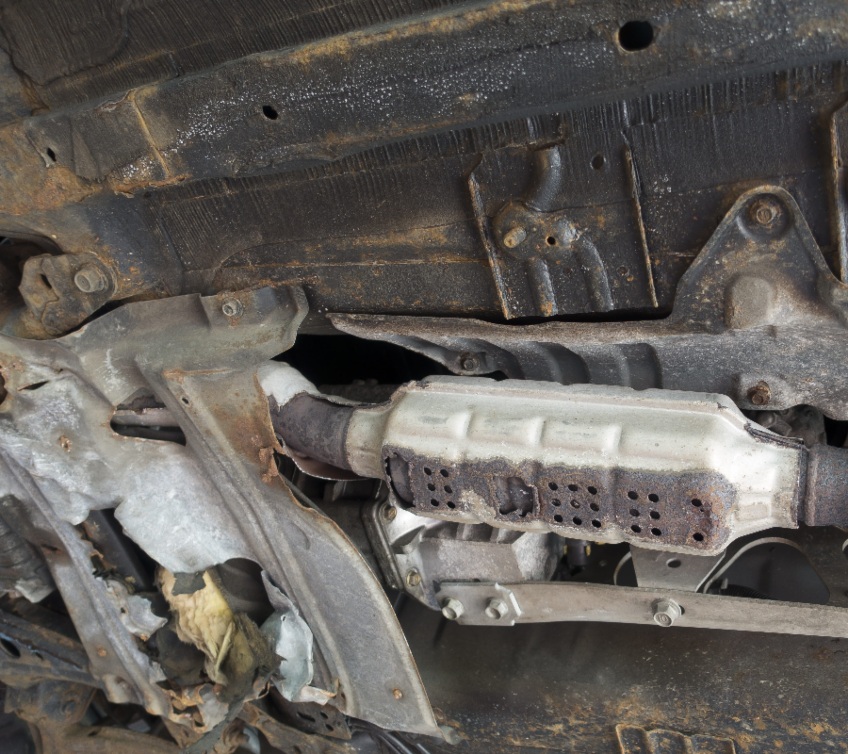Do you know among the 30,000 parts of your car, only one is doing the job to reduce air pollution? Yes! You got it right, we are talking about the catalytic converter present in your car. It has become a major part of every automobile since 1975. The main purpose of a catalytic converter is to convert toxic gases into less harmful ones before releasing them.
However, the catalytic converter can get damaged due to several real reasons. As a result, your car’s performance is affected and you end up adding to the air pollution. Therefore, you must get it repaired ASAP. Before heading towards the ways to deal with a bad converter, we must go through the signs and reasons for a bad catalytic converter.
Signs of a Bad Catalytic Converter
The following are some common bad catalytic converter symptoms.
- You may notice a slow power retain performance that can directly impact the acceleration of your car.
- Sulfur or rotten egg smell may start spreading to your car. This smell is due to the incomplete conversion of sulfur oxides.
- One of the most prominent signs of a bad catalytic converter is the release of dark-colored smoke from the exhaust. This dark color is due to the presence of sulfur and nitrogen oxides that don’t get converted.
- You may also observe extreme heat under the vehicle.
Reasons Behind The Bad Catalytic Converter
Age
The first reason behind this problem is the age of your converter. The converter present in your vehicle cannot last forever. It often stops working after 100,000 miles or 10 years.
Overheating
If your engine is overheating then it can be a leading reason behind it. These converters are made of metals such as platinum, palladium, or rhodium. Catalytic converter metals melt or get damaged due to extreme temperatures. Therefore, the converter’s functionality is affected.
Bad Fuel or Contaminated Oil
If you are using bad fuel or contaminated oil, it can also result in a bad converter. Your vehicle’s converter gets clogged due to bad or contaminated oil and fails to perform.
Incomplete Combustion
Incomplete combustion of fuel results due to the defective combustion chamber. This incomplete combustion results in the release of a lot of toxic gases including carbon dioxide. The converter failed to handle all these gases and became defective.
Methods To Deal With The Bad Catalytic Converter
You cannot allow yourself to drive a car with a defective catalytic converter and spread pollution. Therefore, you need to get it repaired ASAP. The following are some most effective ways to deal with it.

Clean The Converter
Your converter doesn’t function properly when it gets clogged. Therefore, simply cleaning it can do the trick for you. You can clean it even without removing it from your car. However, the best way is to remove it and deep clean it. Using fuel or fuel additives to clean your car’s catalytic converter is the best option.
Fixing Exhaust Problems
Exhaust problems often lead to damage to your vehicle’s catalytic converter. Defective exhaust gaskets and corroded flex pipes are the two most common exhaust problems. Fixing these problems can improve your converter’s efficiency.
Engine’s Tuning
The engine is the central part of your car. A defective engine is the most common reason behind it. Therefore, you must get it tuned properly. Replacing the engine’s oil timely is also required to keep your converter and engine active.
Replacing
If your catalytic converter is not working because of aging, then you must not waste time or money to get it repaired. It wouldn’t last long after repair. The best solution you are left with in such a case is the replacement. You must get a new catalytic converter. After the replacement, your problem will be solved for the next 8 to 10 years. You only need to keep the converter maintained for proper functioning.
FAQs:
What is a Catalytic Converter?
It is a part of automobiles. It is incorporated into the exhaust system of your vehicle and contains metal catalysts to convert pollutant and poisonous gases into less harmful gases.
What does a Catalytic Converter do?
The main function is to convert poisonous sulfur and nitrogen oxides into less dangerous gases. Carbon monoxide is also converted into carbon dioxide as the latter is less dangerous and is consumed by plants as well.
How does a Catalytic Converter work?
It worked by using metals such as palladium, platinum, etc., as catalysts. These catalysts perform the task of gas conversion before exhaust.
Where is the Catalytic Converter located?
It is usually located underneath your car. It is attached to the exhaust pipes with the help of bolts.
Bottom Line
You can now fix your car’s catalytic converter problems. Once you notice any symptom of a bad catalytic converter, you must look for the reasons behind it. After that, you have to try the aforementioned methods to fix it or simply get it replaced.
Last Updated on March 31, 2023 by admin

Mac is an Automotive enthusiast. He owns up to 15 vehicles. He deals with Auto problems and shows his skill to Car owners who are seeking any type of Car help.





